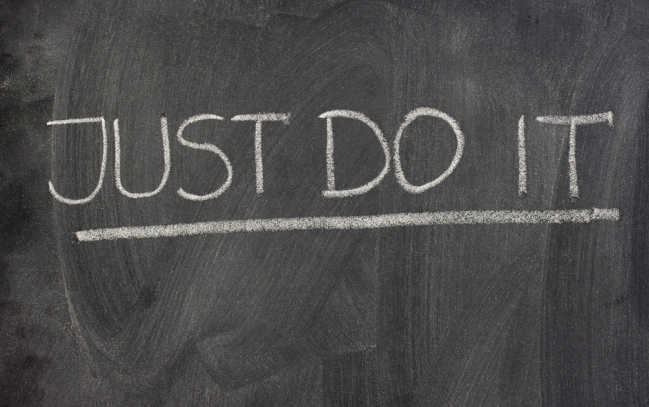Have you ever been completely lit-up by a great speaker and then found yourself wondering why those brilliant ideas haven’t changed a thing that you’re doing in your life or your business? Maybe you’ve even made a bold declaration to change, calling upon all the determination you can muster and yet a few months later it’s like a New Year’s Resolution in early March, just a vague memory.
If you suffer from massive bursts of inspiration followed by business as usual, you’re not alone. There’s actually a name for this phenomenon–it’s called the ‘Honeymoon Effect.’ It’s a time when you’re blissfully lit up by a new idea before descending back to your old reality, back to the status quo of how you’ve always done things.
So what gives? Why is inspiration not enough to create change? After studying why most individual and organizational change-efforts fail, Positive Psychologist Tal Ben-Shahar concludes:
Real change doesn’t come from an insight. Real change comes when we follow up on our ideas and insights with action…To enjoy lasting change we must take immediate action, and establish rituals that will enable the new behavior to take root.
Most people mistakenly believe that self-discipline is the key to making new ideas take root. We think, ‘if only I was more disciplined I would (fill in the blank)….’ But that’s not the case. As Tony Schwartz, author of The Power of Full Engagement points out, we can’t rely on self-discipline because we humans have so little of it. The key is developing rituals so that you do what you intend to without having to summon all the willpower you can muster. You do it without having to think about it, like brushing your teeth upon rising or reading a story to your kids every night at bedtime. No pep talks necessary. No mental breakthrough required. You just set a time and do it.
Developing rituals or taking some kind of immediate action on what you’ve learned is so critical to meaningful change that management guru Peter Drucker went so far as to tell every wisdom-seeker who spent time with him:
On Monday, when you go back to the real world, don’t call me and tell me how inspired you were. On Monday, tell me what you’re doing differently.
New ways of being often pose a threat to our current ways of being. They often challenge what we believe to be true—about ourselves or our organizations. While we don’t like to admit it, we sometimes believe that we’re fundamentally incapable of living in a new way. Self-sabotage—I or my company is not good enough, strong enough, talented enough (fill-in-the-blank with shortcoming of your choice)— is a big wet blanket on efforts to change.
This is where the very wise adage, Fake it till you make it, comes in to play. Turns out, behavior actually changes beliefs. When you fake a smile, your brain releases endorphins just the same as if you were actually smiling. Start walking with a little swagger, soon enough you’ll have swagger. Act like you’re confident speaking on stage, soon enough you’ll actually be confident on stage. Social psychologist David Myers overturns the commonly held perception that our beliefs drive our behavior by pointing out:
We are as likely to act ourselves into a new way of thinking as to think ourselves into a new way of acting….rather than limply resign ourselves to our current traits and emotions, we can stretch ourselves, step by step…we can pretend, trusting that before long the pretense will diminish as our actions ignite a spark inside…
If we don’t reinforce new ways of thinking with rituals that help us act on our intentions and behave in ways that transform how we imagine ourselves to be, we’ll slide right back into our comfort zone of old-line thinking.
This holds true for organizations too. Great organizations create rituals that enable people to practice the high ideals of the organization; in so doing, their people begin to truly embody the ideals and values.
Texas A&M, for example, has an abundance of rituals – like Elephant Walk, Muster, Silver Taps, the Big Event, 12th Man – each designed to ensure every student has a regular and distinct experience of living the values that A&M aspires to cultivate in their students. By designing rituals that enable students to act loyal or act selfless or in service to others, students actually begin to embody these values. Without the rituals and practice of living the values in place, the inspirational Values would be nothing more than words in a recruiting pamphlet.
Next time you’re inspired by something, don’t just rely on that inspiration to make it manifest in your life. Create a ritual so that you don’t have to think about it. And then do it – even if you have to fake it – until it becomes a genuine part of who you are.
